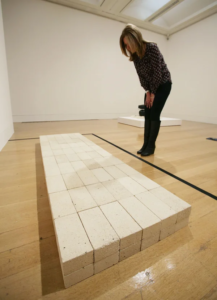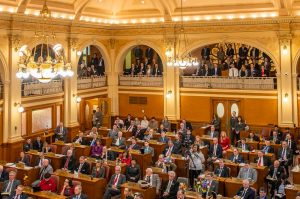CASPER — Recent data suggests Indigenous people continue to make up a disproportionate amount of Wyoming’s homicides and missing persons cases, but tribal members say even the best numbers are not telling the full story. A report from the Wyoming Survey and Analysis Center says that of 22 reported homicides in the state during the last fiscal year (which ended in June), five were Indigenous people — or 23%. Since 2000, Indigenous people have accounted for 21% of reported homicides. Wyoming’s population is just 3% Indigenous.
In the same time period, 17% of 1,126 reported missing people were also Indigenous, and nearly 60% of those were women. Of those missing people, around 87% were under the age of 18.
A three-year report on crime data from the Bureau of Indian Affairs also showed that other crimes including sexual and aggravated assault are more common on the Wind River Reservation than in the state as a whole. In 2020, there were 7.3 reports of sexual assault on the reservation.
But reporting and data likely underestimate the problems, representatives from the Division of Criminal Investigation and the Wind River Reservation said during a meeting Thursday of the Legislature’s Select Committee on Tribal Relations.
Nationally, numbers for sex and other violent crimes are almost always undercounted, said Cara Chambers, director of victim services in the Wyoming Attorney General’s office.
In Wyoming, very little of the information produced by statewide or non-indigenous agencies includes interviews with actual tribal members who’ve experienced these losses firsthand, said Northern Arapaho member Rep. Andi Clifford, D-Riverton.
“It comes down to a mentality of not respecting our knowledge and our experience,” Clifford said. “(Law enforcement officials) think they have all the answers and know what’s best for us, and they’re not listening to understand.”
Most law enforcement in the state is headed and staffed by white people. There is work being done on missing persons cases in Wyoming — a Casper woman is leading the charge for legislation to create a uniform reporting database, and DCI recently updated its missing persons list to make it easier to use.
But the problem, Clifford said, is that few of the active efforts bring Indigenous people to the decision-making table.
“I want to empower our tribal law enforcement,” she said. “Our tribal people have enough expertise and educated people that can do it … I understand we need to collaborate, we need to partner, there are resources we don’t have, that’s important. But we need true tribal consultation.”
The Indigenous people that are working those cases are spread thin across the Mountain West.
Bureau of Indian Affairs special agent Garrick DeClay works on the newly created Missing and Murdered Unit under the Office of Justice Services. He’s based in Montana, DeClay said, but until recently he and one other agent covered Wyoming, Oregon and Washington as well.




